You just brought your male cat home after he got snipped. He’s groggy, maybe even woozy. Your vet sent him home with specific instructions and possibly even a cone—that not-so-fashionable plastic lampshade. You stare at it, then at your cat, and wonder: do male cats need a cone after neutering, or is this just an over-the-top precaution?

Before getting down to business, let’s define what neutering is. It’s a surgical procedure where the vet removes the testicles to prevent reproduction and reduce certain behaviors. The procedure is quick, usually done under general anesthesia, and involves a small incision in the scrotum or just in front of it.
After surgery, their balls will shrink over the next several days, and the incision site will begin to heal. Typically, healing takes about 5 to 7 days, during which your cat might feel tired, nauseous, or uncomfortable due to anesthesia and the surgery itself. You may notice some swelling or redness, but these should gradually improve.
Behaviorally, your cat might be less active, more withdrawn, or even a bit grumpy, which is expected as they recover. As they heal, keep them relaxed. Avoid leaping or scampering and prevent rough play with other pets.

It’s a million-dollar question for many cat owners. You hear vets say one thing, and then your friend with three cats tells you something else entirely. But what is the truth? Do they need to wear a cone? The short answer is—it varies, but it’s ideal.
Vets recommend cones to prevent your cat from grooming or nibbling at the incision area. Cats, unlike us, don’t have self-control. If they lick or bite the surgical scar, it can irritate the healing tissue. It can also introduce bacteria and pull out any internal sutures, leading to infection or delayed healing.
Several things influence whether your cat needs that cone. Younger, more energetic cats might be more prone to bothering their surgical site than older, lazier furballs. A cat with an anxious or obsessive personality might also need the cone more.
Even their activity level plays a role; a cat who loves to jump and play might accidentally strain the area. So, while many vets will say yes, most male cats need a cone after neutering to ensure a smooth recovery.
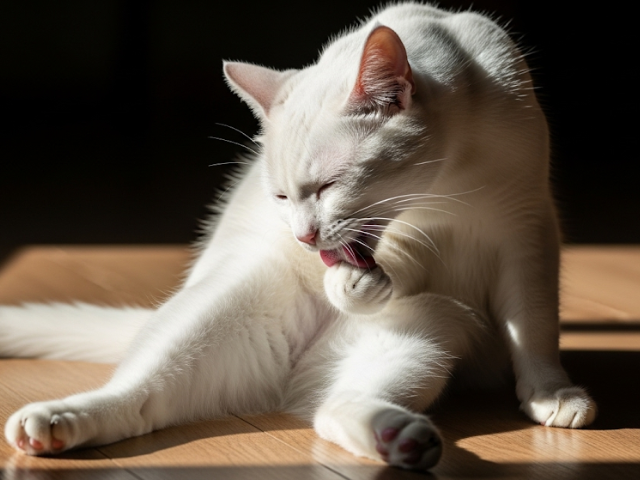
You might get lucky. But here’s what could go wrong if you gamble:
So, how do you know if your cat needs a cone ASAP? Watch for these signs:
If you see these signs, it’s cone time. Don’t wait for things to get worse.
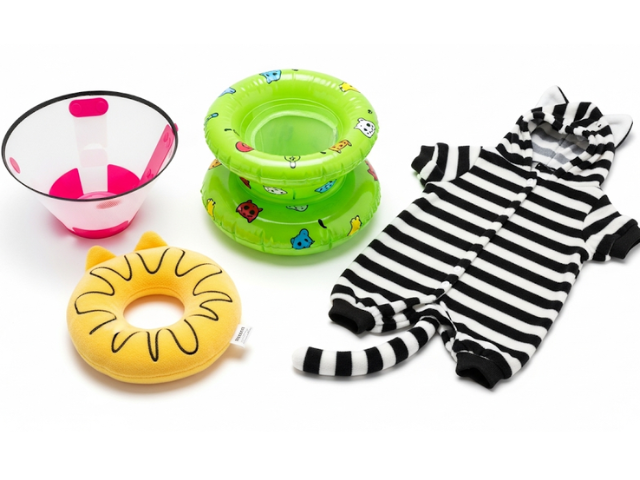
Not every cone is created equal—your cat’s comfort can heavily depend on the type of cone he’s sporting.
Often referred to as a “cone of shame,” the classic plastic cone creates a robust barrier around your cat’s neck. Its perks include proven efficiency and a familiar design for veterinarians. However, many cats experience discomfort, limited vision, and even temporary disorientation with this option.
Modern alternatives are changing:
Each alternative comes with benefits and drawbacks, with the best selection depending on your cat’s habits and personality. For added ease, read customer reviews to ensure you’re choosing quality care accessories.
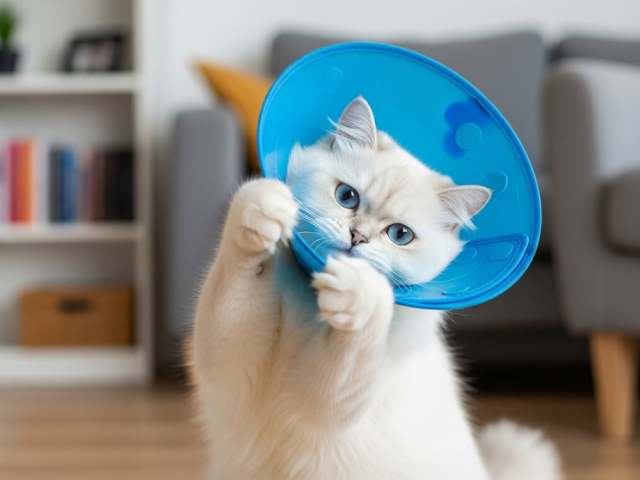
Most cats do not love the cone. They might try to take it off, bump into furniture, or even refuse to move. Some cats become withdrawn or irritable.
To help your cat adjust, give your tomcat treats when you put it around his neck to turn it into a positive experience. Make sure he can still eat, drink, and use the litter box comfortably. You might need to raise his food and water bowls. Distract him with toys and playtime to keep his mind off the cone.
Keep an eye out for signs of stress. If your cat doesn’t eat, use the litter box, or appears distressed, call your vet. They can offer more tips or suggest a different type of cone.
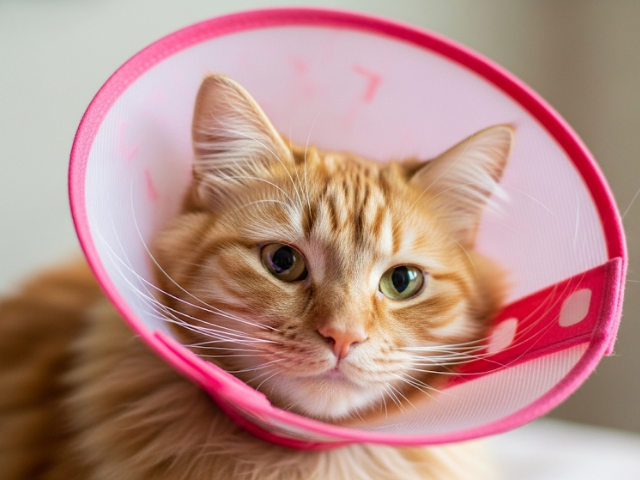
Typically, cats wear cones for about 5 to 10 days—the time it takes for the incision to heal sufficiently. You can remove the cone once the wound looks closed, no redness or swelling, and your cat stops trying to lick the area.
Even after removing the cone, keep an eye on your cat to ensure they don’t start bothering the surgical wound again.
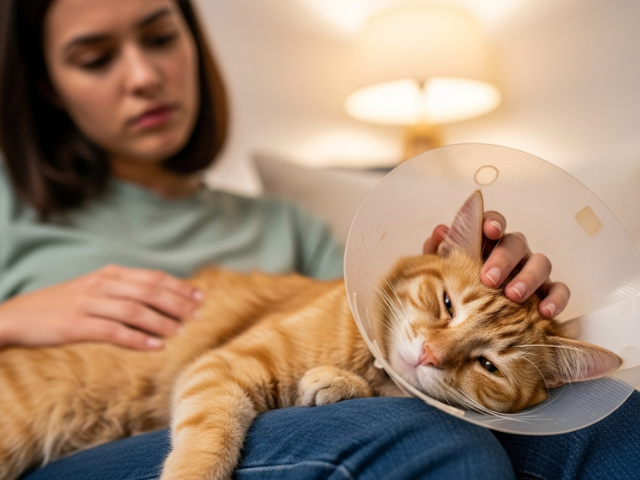
While neutering is a routine procedure, it’s always wise to know what to watch for during recovery. Here are symptoms that suggest your cat might be having complications and needs immediate vet attention:
If you spot any of these alarming signs, call your vet immediately. Remember, taking care of your cat now can prevent bigger problems later!

You’ve got options if the cone becomes a war zone.
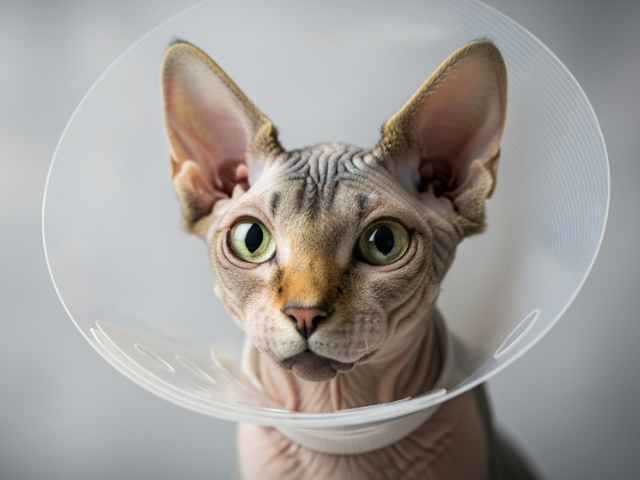
Every cat is unique, just like their personalities! Some male cats are super calm, while others are energetic little bundles of joy. So, whether a cat needs to wear a cone depends on their behavior.
Here’s a quick reference of whether or not a cone might be needed:
Cat Behavior | Cone Needed? |
|---|---|
Laid-back/Lazy | Possibly Not |
Moderately Active | Yes – Check Often |
Hyperactive/Curious | Definitely |
Always trust your instincts and your vet’s advice. The key is to do what keeps your pet safe during their critical healing time. Your observations matter, so prioritize their well-being above all.
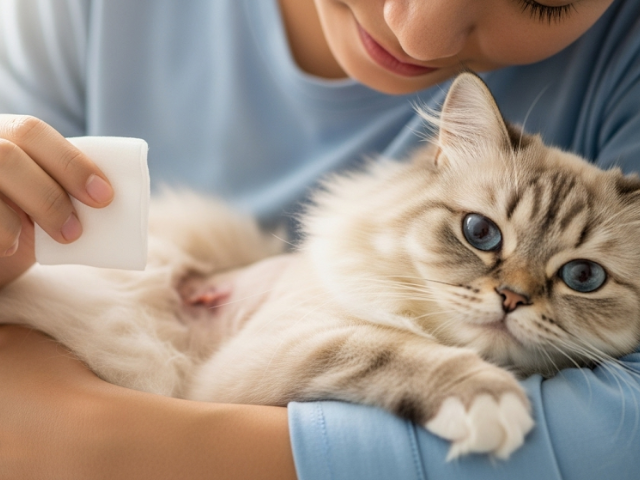
Cleaning a surgical wound is necessary yet tricky. Your vet advises you to leave the site alone unless it looks dirty or infected. If cleaning is a must, do it gently. Use a soft cloth or pad soaked in warm water or a vet-approved antiseptic solution. Dab the area softly; do not scrub or rub. Pat it dry afterward.
Avoid potent wound cleaners unless your vet specifically tells you to. These solutions can irritate the wound and slow down the recovery.
Check the scar twice a day, but don’t obsess over it. Look for swelling, redness, or discharge. If your cat resists, distract him with treats or a toy. If he’s in pain, stop and call your vet. Your main goal is to monitor without causing more stress.
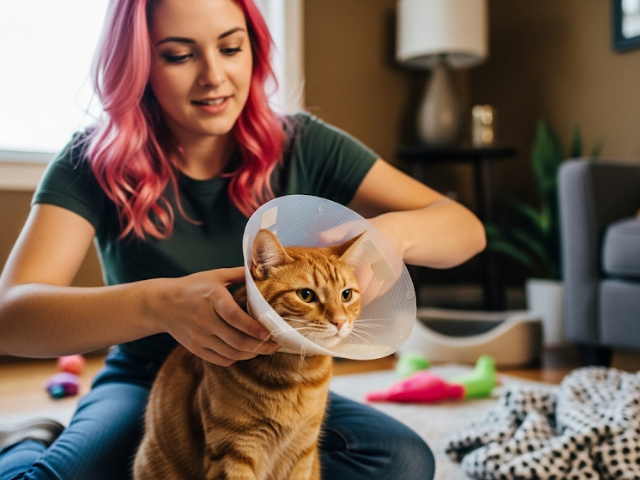
If you’re unsure whether your male cat needs a cone after neutering, err on the side of caution. A week of mild annoyance beats the risk of infection or reopening wounds. With patience and care, your cat will adjust and heal safely.

